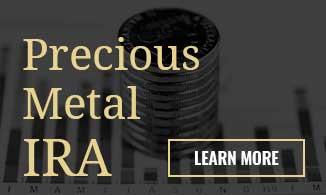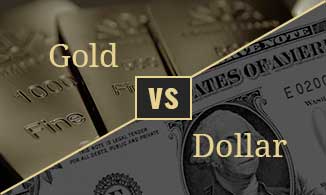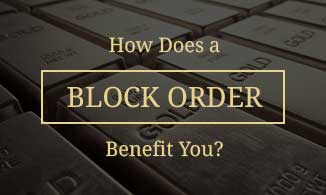
(Personal Liberty Digest)
When an individual goes bankrupt, he has spent more than his income. His debts and the interest on those debts exceed all the income he has to such a degree that they are beyond his ability to repay.
Most people believe that national governments go bankrupt because they spend too much or spend more than their income. This is what colleges and universities teach and propaganda media parrot. Furthermore, when governments “overspend,” they call it “deficit spending.” But there is no such thing as national bankruptcy as the word “bankruptcy” implies or as it applies to the individual.
There are certain key words and phrases cleverly put into use to conceal the source of government finance: Federal budget, government spending, government deficit and Federal income tax. Believe it or not, none of these terms relates to government finance. But they do cover government fraud on an unbelievable scale.
The terms Federal budget, government spending and government deficit are meaningless when the Federal government and the central bank (Federal Reserve) create money in the form of paper and numbers called credit, in unlimited amounts. The government does not want public knowledge of its monetary trickery. This is why universities teach “accounting” and “finance.”
A simple axiom: To go broke or bankrupt in the national government sense implies that there is a finite or limited supply of money available to national governments. But money does not exist, and no one has ever proven that it does. People think that paper “dollars” are money. In truth, no one has ever seen a dollar. A dollar is not a thing. It is a unit of measurement the same as the terms quart or ton.
Don’t believe me? Will you believe the Federal Reserve’s own publications from the 1970s?
- “Today, most coin and currency is ‘fiat’ money — money by virtue of government declaration and public acceptance. Fiat money isn’t valuable in itself and doesn’t represent a claim on gold or silver. Fiat money is acceptable because people know money’s true value is its purchasing power — its ability to buy goods and services.” — The Story Of Money, p. 19, Federal Reserve Bank of New York
- “Coin and currency are ‘Legal Tender,’ money the Government says has to be accepted if offered to settle a debt. But that approval doesn’t make cash any more ‘real’ than checkbook balances.” — I Bet You Thought… p. 7, Federal Reserve Bank of New York
- “Neither paper currency nor deposits have value as commodities. Intrinsically, a dollar bill is just a piece of paper. Deposits are merely book entries. Coins do have some intrinsic value as metal, but far less than their face amount… What, then, makes these instruments — checks, paper money, and coins — acceptable at face value in payment of all debts and for other monetary uses? Mainly, it is the confidence people have that they will be able to exchange such money for real goods and services whenever they choose to do so.” — Modern Money Mechanics, p. 3, Federal Reserve Bank of Chicago
- “Currency backing isn’t relevant in today’s economy. Currency cannot be ‘redeemed,’ or exchanged, for Treasury gold or any other asset used as backing. The question of just what assets ‘back’ Federal Reserve notes has little but bookkeeping significance.” – I Bet You Thought…, p. 11, Federal Reserve Bank of New York
- “Commercial banks are important financial institutions because they can create money — checkbook money. When we borrow $200 at a local bank to buy a washing machine, we sign an I.O.U. and the banker writes a slip for a $200 addition to our checking account. No one has any less money on deposit, but we have more. The banker has bought our I.O.U. with new demand deposits - checkbook money - which were created. Bank credit and checkbook money have both increased $200.” — Money and Economic Balance, p. 177, Federal Reserve of New York
The method of money creation is witchcraft. It has been witchcraft for thousands of years. Modern economists and sophisticated eggheads only imagine that they understand money.
Yet nothing that affects our lives could be so all-important. Money is not a dull subject, because the study of money is a study of tyranny. It makes a mockery out of human freedom, property ownership and the accumulation of wealth.
Once we understand money, we then know that any imagined personal freedom that we have is a license or privilege given by the government which can be taken away by the government. The purpose of money is to transfer wealth from the producers to the nonproducer money creators.
John Maynard Keynes revealed a lot in his book, Consequences of the Peace, published in 1919. He stated, “If governments should refrain from regulation (taxation), the worthlessness of the money becomes apparent and the fraud upon the people can be concealed no longer.”
Keynes said in this statement that the system of income tax covers the fraud of the government printing press. What does this mean? It means that the government and its partner the Federal Reserve is printing money (creating credit) out of nothing and paying it into circulation for whatever the government wants, whether it be a fleet of ships or an army or to keep the people fat and happy. To cover the fraud of massive confiscation of wealth with printing press money, we have an income tax system.
The income tax system has a very serious purpose, but contrary to what Americans think the income tax has absolutely nothing to do with funding the government. The income tax is a consumption tax. The income tax regulates consumption. Note Keynes’ word “regulation” above. The income tax system penalizes those who are successful. It is a social and economic leveling system.
The income tax also is used to take as much “money” out of circulation as possible. The more “money” taken out through the income tax, the more the money creators can create. The less “money” there is, the better it keeps its imagined value.
- “Too much money results in excess spending. When consumers, businesses and governments spend excessively, they compete for the available supply of goods and services and force prices up. When prices rise, the purchasing power of money falls. To keep purchasing power strong, then, the supply of money must not increase too rapidly.” — I Bet You Thought…, p. 111, Federal Reserve Bank of New York
The Federal government funds itself with “printing press money.” The income tax does not fund the Federal government. Almost nobody knows this, but it is extremely important to understand. The power to create money is the source of government force and bureaucratic tyranny in our lives.
What does all this mean to us? It means that we live under an authoritarian system and we are at its mercy. The Federal government has monopoly power to create money (credit or debt) backed by force. And it disguises this system from the people with the income tax system explained above. Simply stated, corporate government is transferring unbelievable and unimaginable wealth to itself with “money” that it creates and which costs nothing. Does this not make “organized crime” look like Sunday school?
This is how and why world wars are financed that cost millions of young lives. This is how social and economic policy is forged into so-called public policy, a euphemism for government social engineering and government force.
“Public policy” is government force in our lives based on monopoly power to create “money.”
So can governments experience economic collapse? Yes, but no one is aware of how it comes about. That’s because it is not a bankruptcy as is generally understood.
Here’s how it happens: The process of government “money” creation is a concealed scheme of consuming (stealing) the national wealth. In effect, the government creates its own wealth — not from taxes, but by creating “money” and using it to fund the government and to transfer wealth from the people to itself. The simple equation is that when governments consume all the national wealth of the people, then the government collapses.
Governments produce nothing, so governments must live off of the producers. It is the nature of governments to grow bigger and bigger and consume more and more of the national wealth. Do you see this happening?
At some point, government overconsumes the national wealth and collapses. Government finally consumes more than the people can produce.
So then, modern bankruptcy of national governments is not overspending. It is overconsumption of the national wealth.






